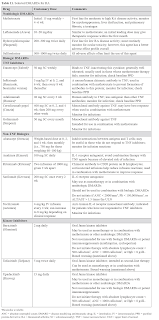Rheumatoid Arthritis
Introduction
Rheumatoid arthritis is a chronic autoimmune disease characterized by persistent synovitis, systemic inflammation and the presence of autoantibodies.
- Persistent joint inflammation can lead to the development of bony erosions, cartilage and tendon degradation and joint deformity.
- It usually affects the small joints of hands, wrists and feet, but can also occurs at other sites.
- It is more common in females than males, with onset between the ages of 30 and 60 years.
Features suggesting rheumatoid arthritis
- Family history of inflammatory arthritis
- Early morning stiffness lasting longer than 1 hour and is usually relieved with activity and warmth
- Swelling in five or more joints
- Symmetry of the areas affected
- Bilateral compression tenderness of the metatarsophalangeal joints
- Rheumatoid factor positivity
- anti-cyclic citrullinated peptide antibody test positivity
- Symptoms present for longer than 6 weeks
- Bony erosions evident on X-rays of the wrists, hands or feet (uncommon in early disease)
- Raised inflammatory markers, such as CRP or ESR, in the absence of infection
- Presence of rheumatoid nodules
NOTE: Rheumatoid arthritis is an autoimmune disease with a strong genetic predisposition.
Management
Disease-modifying antirheumatic drugs (DMARDs) are recommended as first-line therapy and should be started early in the diseases course. Prior to starting DMARD therapy:
- Screen for hepatitis B, hepatitis C, and latent tuberculosis infections
- Give all age-/risk-appropriate immunizations before DMARDs or biologics. A 2-week waiting period is recommended.
Clinical remission should be the primary treatment target, but low disease activity may be appropriate for patients with long-standing disease or comorbidities.
- Consider therapeutic adjustments every 3 months until the treatment target has been reached.
- Choice of drug adjustments are based on the disease activity and history of failed DMARDs.
- In most patients, begin DMARD therapy with either methotrexate or leflunomide.
- Hydroxychloroquine and sulfasalazine are lower-toxicity DMARDs which can be used initially for patients with low disease activity.
- Biologic DMARDs are used in combination with methotrexate for severe disease or as alternatives if nonbiologic DMARDs are ineffective or contraindicated.
- Consider tapering DMARD therapy when the treatment target has been reached.
NSAIDs, glucocorticosteroids or both can be used for immediate pain and inflammation relief.
- NSAIDs should be used at full therapeutic antiinflammatory doses for initial therapy of patients with active rheumatoid arthritis (RA), unless contraindicated by gastrointestinal, renal, or cardiovascular disease. NSAIDs also provide analgesic benefit, but unlikely to affect joint damage or disease progression.
- Corticosteroids have anti-inflammatory and disease-modifying effects in rheumatoid arthritis. Because of their rapid onset of action, corticosteroids are often used by specialists to achieve rapid symptom control at presentation, or during an exacerbation of disease, while awaiting a response to conventional synthetic disease-modifying antirheumatic drug (csDMARD) therapy (which can often take between 6 and 12 weeks).
- Although corticosteroids are effective, significant adverse effects limit their use. When disease remission is achieved, the dose of corticosteroid should be slowly tapered until the corticosteroid can be stopped. Unfortunately, this is not possible in all patients.
Nonpharmacologic Management
- Not only is smoking linked to the development of rheumatoid arthritis, it is also linked to poor prognosis and is a predictor of poor response to therapy.
- Smoking also increases the risk of developing cardiovascular disease in a patient group already at increased risk.
Physical activity and exercise
- General rest as a strategy to decrease fatigue or other symptoms is no longer considered appropriate.
- Resting an inflamed joint may be beneficial. Resting a particular joint by splinting can help reduce joint pain and function and prevent deformities.
- Assistive devices if needed.
Surgery for tendons or joints.
External Links
- Rheumatoid Arthritis: Causes, Symptoms, Treatments and More
- Combination etanercept and methotrexate provides better disease control in very early (<=4 months) versus early rheumatoid arthritis (>4 months and <2 years): post hoc analyses from the COMET study, 2012
- Rheumatoid Arthritis: A Brief Overview of the Treatment, 2018
- Tapering towards DMARD-free remission in established rheumatoid arthritis: 2-year results of the TARA trial, 2020

Comments
Post a Comment